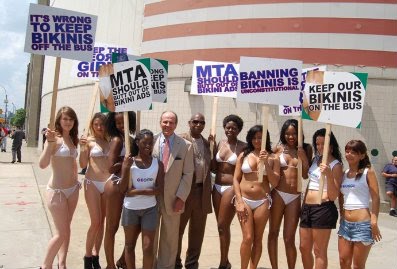We recently posted about an ad for internet service that used the metaphor of a prostitute. It/she was “fast” and “cheap” with “satisfaction guaranteed.” We also recently posted about national personifications, fictional or semi-fictional people used to represent countries. This ad campaign, submitted by Mary S., has both.
Victoria, a city in British Columbia, is personified as “Victoria,” the sex worker. “Victoria’s cheap,” the ad reads, “but she’ll show you a great time.” The larger message, of course, is that places are like women and women are like places. They are experiences to purchase and consume, preferably cheaply.
UPDATE: Some in the comments have suggested that I cropped the ad to make my point. So here is the whole front page of the website, victoriascheap.com:
Lisa Wade, PhD is an Associate Professor at Tulane University. She is the author of American Hookup, a book about college sexual culture; a textbook about gender; and a forthcoming introductory text: Terrible Magnificent Sociology. You can follow her on Twitter and Instagram.











